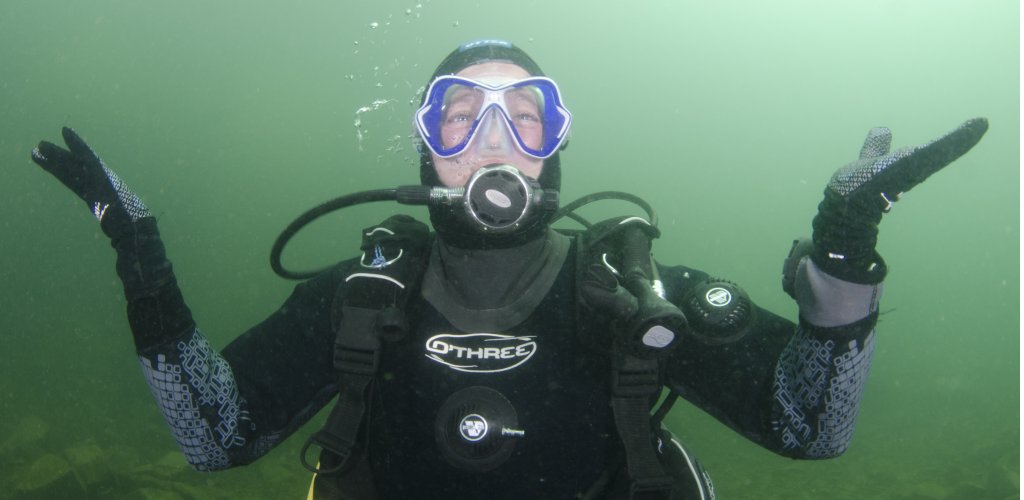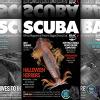
Ever wish you were one of those divers with an innate gift for finding the shot line? Gordon Procter has some tips and techniques to help you master underwater navigation.
There are two parts to navigating: knowing where you are, and knowing how to get to where you want to go. It’s hard to do either of those things if you don’t know what the site looks like: so you need to build up a mental map. Sometimes you can get in the water knowing what to expect – a good site briefing can give you lots of useful information. As you are swimming around, you can add extra detail and build your map as you go.
Building a mental map
The more detailed the map you can create, the more information you have to go on when trying to navigate. A little bit of homework (or a lot, if you fancy it) can make it much easier to navigate: it’s like using a street map rather than a road atlas.
What to include on your map?
There are two sorts of things to put on your map: interesting things and big, obvious things. You want to try and find interesting bits of the site and big, obvious markers that are easier to spot in low visibility.
Your mental map can be based on information from a site briefing (“The shotline is in 8m of water, on top of a pinnacle that quickly drops off to 35m”); from a guidebook (“The wreck lists slightly to starboard and has been heavily salvaged around the stern”), or perhaps an article from this fine publication. In everyday life, we only normally think about navigating in two dimensions: a SatNav might tell us to turn left or right, but going up and down is much harder. Diving lets us explore in three dimensions – so noticing the depth is a useful (and important) part of your navigation. If the shotline is at 18m, then looking for it at 12m isn’t going to be very successful!
Wrecks in particular
Most wrecks are quite similar, so thinking about an average boat can go a long way to helping flesh out your mental map (there’s a nice bit in the Wreck Appreciation course about this) and applies to a lot of sites.
The bits of a wreck that tend to survive well underwater is the bow (the pointy bit at the front), the stern (the blunt bit at the back) and the engines and boilers. This is because they are made of chunky bits of metal, so they break up much slower than the rest of it. Wrecks often also have plenty of ribs (like girders) and plates that have come from the hull (the outside of the boat) – but they can get confused with the decks.
You can often tell when you are getting near to these bits because anchors often live near the bow, propellers and steering gear live near the stern and the boilers and engines are normally in the middle of the wreck (past the holds, with winches and cranes nearby).
You can also think about the specific wreck that you are diving. An article that guides you around the wreck will include lots of really good information, or information about the wreck before it sank might tell you how it was arranged: for example, what superstructure there was, and whether it had a steam engine (and so there’ll be a boiler to look out for) or a diesel one (so there won’t).
Where are we and where do we want to go?
On most of my dives, I’m quite happy to swim around and keep a lookout for interesting things: it’s fairly rare you definitely want to get to a particular point on a site. In this sort of scenario, my main navigational objective is to come back to the shotline. After you’ve worked out roughly what the site looks like, the next step is to try and work out where you are. The easiest time to do this is right at the beginning of your dive: you’ve got a nice fixed reference point like a set of steps that you got in from, or the shotline. It works well mid-dive too – knowing that you swam down the port gunwhale away from the bow helps you to plot your position on your mental map. While you are swimming around, try to think about where you are in relation to a fixed point. This might be something along the lines of “I swam south from the steps” or “We dropped over the edge onto a wall and turned right”. This gives you some idea where you are in relation to it.
The composition of the bottom can give you some really useful information: if you know that part of the site has a sandy bottom and the rest of the site has a rocky bottom then a quick look down will tell you which half of the site you are currently on.
How do you get there?
The main difficult thing about navigating is knowing which way you want to go, and which way you are facing. As you are swimming around, you can tick things off your mental map: “I know there are three pinnacles on this site, we started at the shallowest one and have swum past another one, so the last one is this way”. Following linear features underwater is the easiest way to navigate: this might be a rock wall (“keep the wall on your righthand side”), the hull or gunwale of a wreck, or the point at which sand becomes rock. With a nice linear feature, it’s dead straightforward to navigate out and back: you simply follow it in one direction, then turn around and follow it back.
You don’t necessarily need to follow the feature exactly – sometimes it’s enough to know that you are swimming out with the rock/sand interface is somewhere over to your left, which means that it should be on your right as you come back. You can do the same things with ripples in the sand (which tend to run parallel to the shore). If you swim out, across the ripples for half of the dive then you’ll want to turn around and head across the ripples to come home. If you go out across the ripples and try to come back along the ripples, then you’re not going to end up where you want to. Part of the Sports Diver course includes using a compass; this is one of my favourite navigational techniques. However, more often than not, I don’t worry about precise bearings. I think it’s much more useful to frequently have a quick look at the rough bearing you are heading: if I swim approximately north for half a dive, then I’m going to want to swim south-ish to come back to where I started. This works well, because a detour to see something interesting will ruin your accurate compass work, but isn’t going to affect your “northish” “south-west-ish” style of navigation. A more advanced option is to swim a rough triangle: maybe heading north-ish for a bit followed by roughly south-east for a bit, followed by west/south-west or so.
What if we’ve missed the wreck?
Providing tips for how to find your way around a wreck is all well and good, but it does somewhat suppose that you’ve found the wreck in the first place and sometimes the shot lands right on the boilers of HMS the vicinity of. So, what to do if you’ve missed the wreck? The first, and really obvious, step is to have a good look around. If it stands off the seabed, you can sometimes see its dark shadow. Sometimes, the shot will have bounced or dragged off the wreck: in this case, there may well be a furrow dug into the sand that you can follow – of course this assumes that the shot started on the wreck... I normally carry a small spool in my drysuit pocket, which means I can go for a circular search if the wreck is nowhere to be seen.
Article source - SCUBA magazine issue 63

 Author: SCUBA | Posted 16 Mar 2017
Author: SCUBA | Posted 16 Mar 2017


